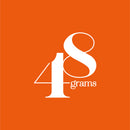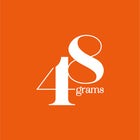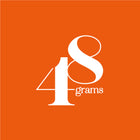Winter acne: the best tips for healing the skin

What blooms most often in the wintertime? This question is part of an old dermatologist joke. The answer is: pimples. Unfair, but unfortunately very true. The cold season is the season of spots - the so-called winter acne. Next to Rosacea and Neurodermatitis, the most common unsightly side effect of low temperatures. Who believes now that the age protects, is wrong. Acne in its frosty manifestation has many faces - from young to old. The 48grams blog clarifies in this article about the emergence, combat but also the myths. Our wish is that we all have fewer skin problems!
From acne vulgaris to acne tarda
To explain winter acne, first a few basic facts about why we get pimples in the first place. Between 80 to 95 (!) percent of all teenagers suffer from it. The manifestations vary. The lucky ones are merely annoyed by a multitude of blackheads, but the majority (sorry, that always sounds disgusting) have to fight red pustules including pus collection. Physicians speak here of "acne vulgaris". Those who are really unlucky live with so-called "acne conglobata": the tissue is partly covered by a crust or shows abscesses and pronounced nodules. Urgent advice: A dermatologist must be consulted here - otherwise there is a risk of scarring. And that never looks nice. The third form is "acne tarda", late acne. It mainly affects men over 50. And there are more and more of them. Scientists attribute the acute increase in the number of cases to our lifestyle: stress, diet, too little exercise.
Whey proteins as a trigger
But why is our skin basically going crazy? Why do we stand in front of the mirror and get desperately annoyed by the red-shiny sprouting? Even after 100 years of research, science still cannot provide a definitive answer. There are many theories - and myths, of course. Too much chocolate can trigger it. At least that's what many parents claim to their children. Well... there seems to be a shred of truth hidden in there. Laboratories have identified a link between dairy products and acne. The whey proteins lead to increased insulin production and that in turn is said to initiate the formation of pimples. Yes, this continues to be abundantly vague. The parental recommendation would then have to include dairy products of any kind in addition to the ban on chocolate.
Pimples vs medication & hormones
However, the following triggers have been definitively clarified: Hormonal changes in the body. Of course, this mainly affects young people in the growth phase. But the stress hormones cortisol and adrenaline can also be to blame. Medications and incorrect skin care (!) are also responsible.
When sebaceous glands clog
Now, before we get to winter acne, let's briefly explain how pimples develop: Our skin (fortunately) has many glands that secrete an oil called sebum onto the surface of the tissue. This creates a useful film, a protective layer against external influences. But when the pores become clogged, bacteria collect in the sebum; the result is a small inflammation, virtually a defensive reaction of the body. The white blood cells take over, fight the bacteria. The result becomes visible as a pus elevation on the skin surface. Et voilà: the pimple.
Winter reduces skin protection
Healing in summertime is possible simply due to the warm temperatures and especially the UV light of the sun. This is a real problem in winter. The skin's protective layer is simply thinner, and the change from cold air to heated rooms causes it to dry out. The tissue threatens to become cracked, scales form. Now bacteria can penetrate from the outside and multiply unhindered. But there is also a second reason: In the frost season, sebum production also runs at full speed. The risk of the glands becoming clogged and the "normal" development of pimples described above thus increases significantly. It is frustrating that the protective mechanisms of the skin can also trigger winter acne.
More and more cases of winter acne
The increase in case numbers has also been scientifically proven. A study of the Journal of the American Academy of Dermatology revealed an eleven percent increase in the occurrence of moderate to severe acne in the cold season. In a nutshell, Andrea Schlöbe of the Society for Dermopharmacy in Cologne, Germany, says: "Skin diseases often worsen in winter."
Squeezing is (always) forbidden
Now that we know the triggers and effects of frost pimples... of course we need to talk about remedies. First things first: squeezing the inflamed bumps is never a good idea. Not in the summer, and certainly not in the winter. The already injured skin is torn open, scarred as a result. But before that, bacteria can penetrate through the wound even more easily. The infection will inevitably worsen. So...please, please...keep your fingers out of your face. As hard as it may be.
Little helper: diet and fluid
Of course, there are general tips against the sprouting pimples. No, we don't mean eating less chocolate. Because that also makes us happy. At least if we enjoy it in moderation. But basically, a slight change in diet can work wonders. The formula is: less sugar, less fat, and more vitamins and fiber. In addition: plenty of water helps a lot. If you hydrate your body from the inside (eight glasses a day are recommended), you'll help keep your skin healthy. Finally - as already mentioned: UV light works wonders against acne in summer – as in the winter period: it triggers a healing process. We at 48grams Blog even take short walks during our lunch break in the cold season to recharge our skin. Even if it's cold outside and often curtained - the power of the sun and lots of oxygen make us look better. And that, in turn, simply makes us feel better.














